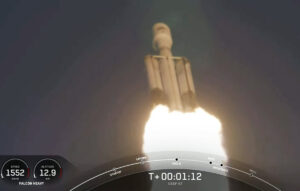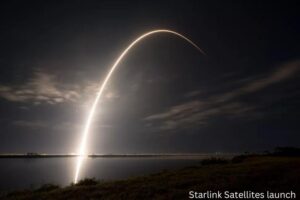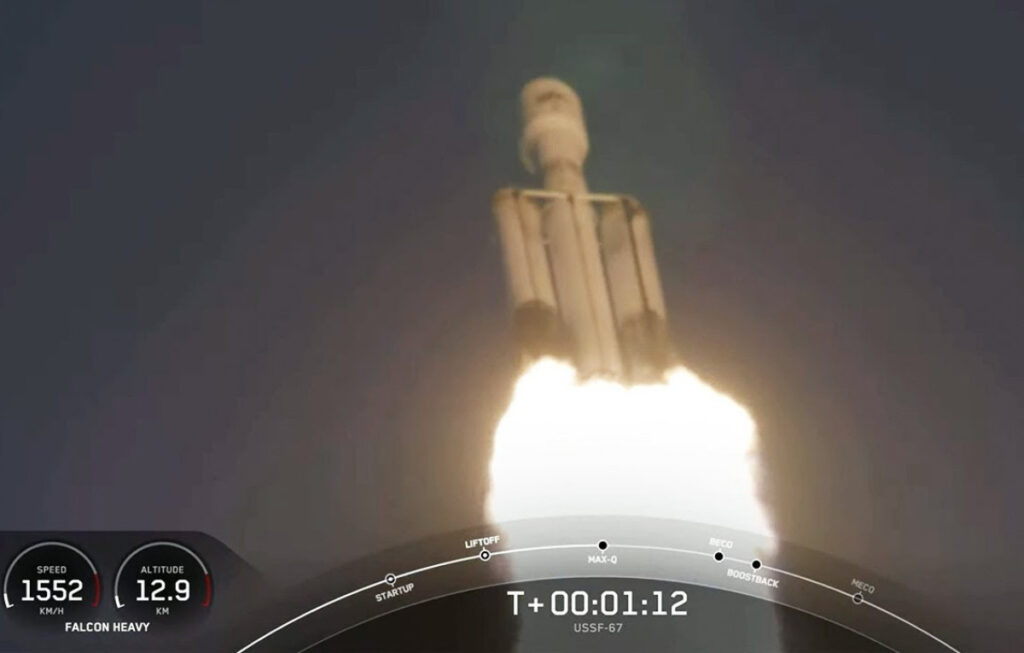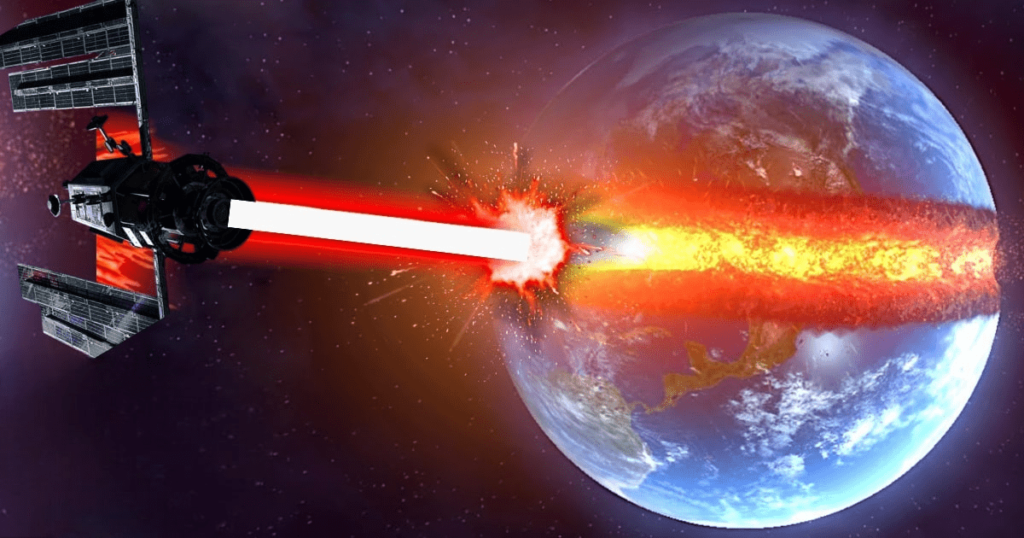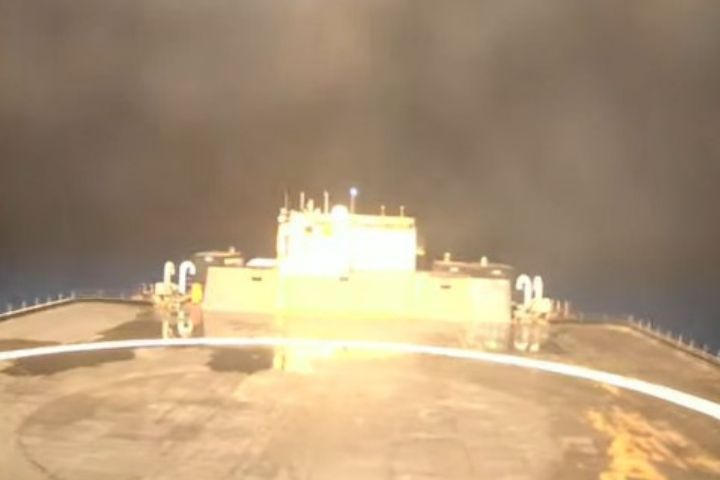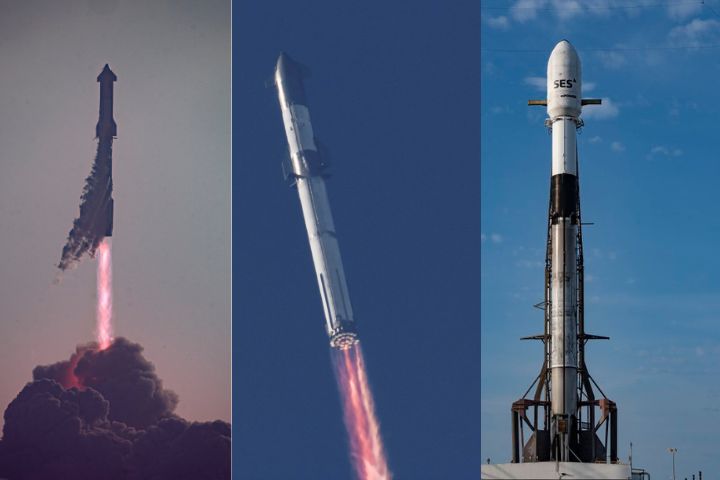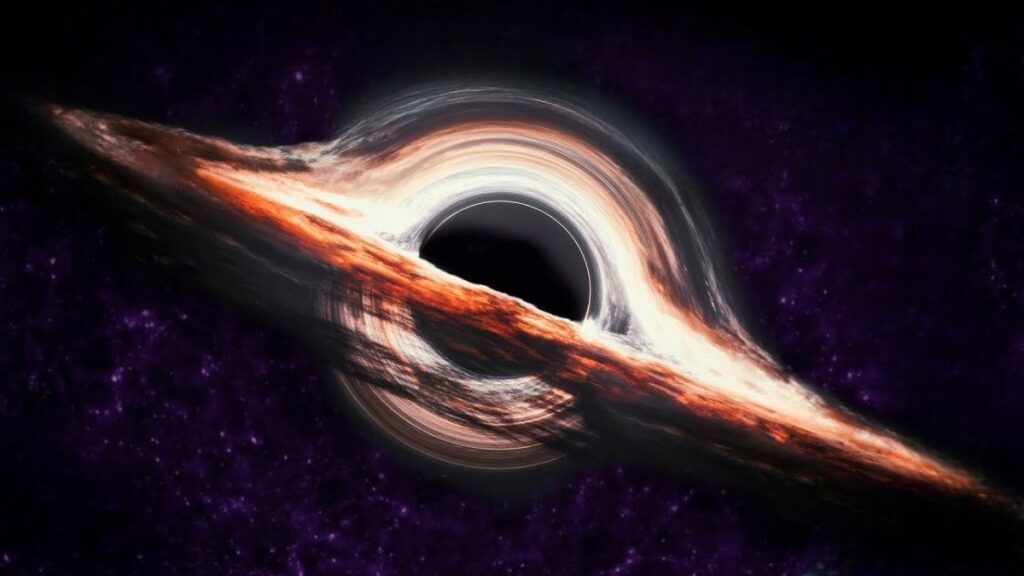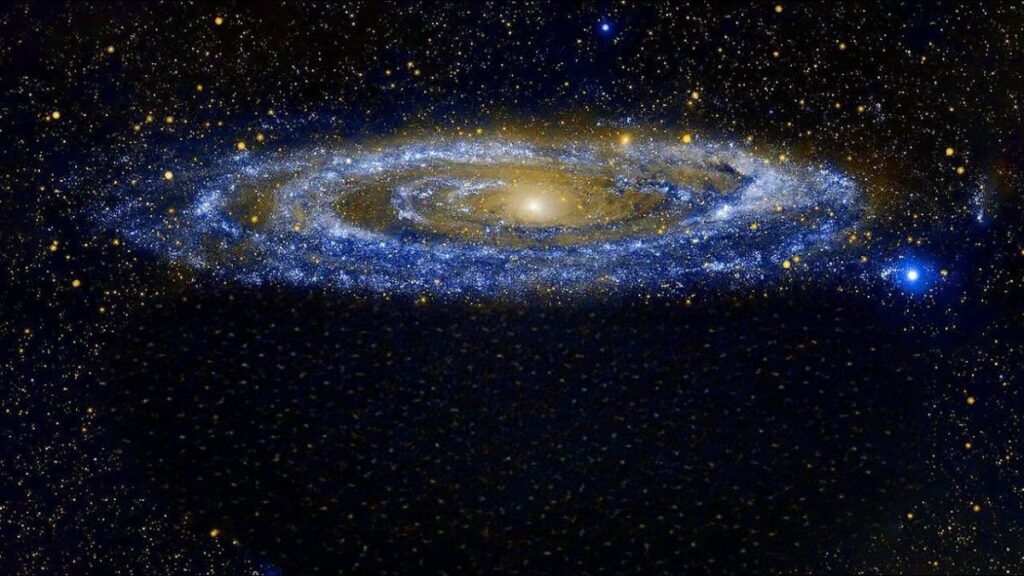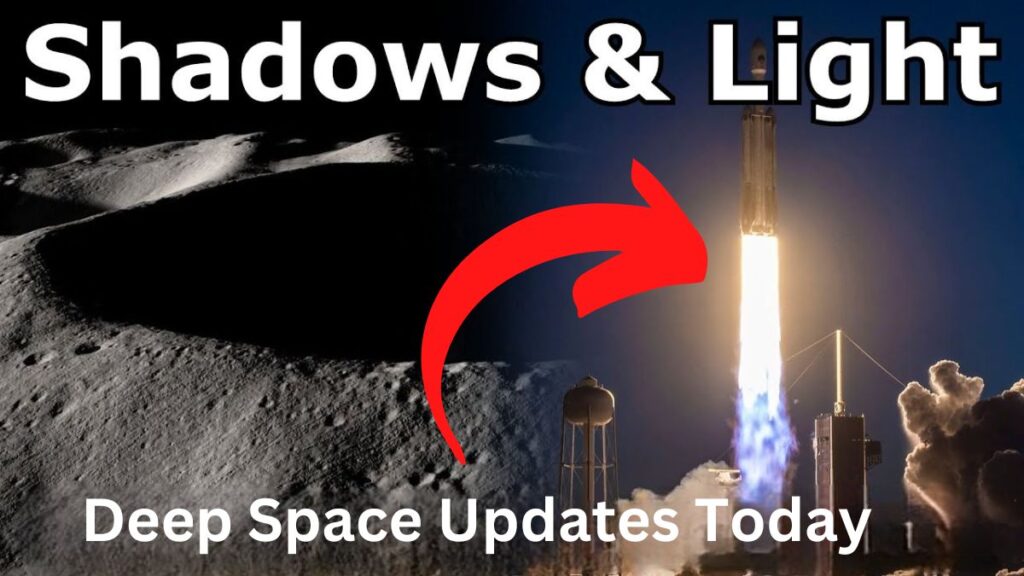
It’s January 22th, and it’s time for some more deep space updates, bringing you up to date with all the stuff in space.
It doesn’t have to be deep space, but sometimes the meaning can be pretty deep.
We’re going to start with the launches that happened uh, starting on the 8th of January, there was a Long March 7A out of Wang Chang in China, carrying a satellite called Shijian-23.
This was a launch to geostationary transfer orbit.
So the 7A, basically as opposed to the seven, it adds a third stage which is hydrogen.
Uh, this booster also had four strap-on liquid boosters and according to sources, it was one of the largest satellites launched by the sort of new generation of kerosene oxid locks rockets that China’s uh, championing.
Um, so yeah, that means that by some estimates the satellite must have masked about six tons and that’s all we know: Geostationary communication satellite.
On January 9th, there was another Chinese spacecraft but a much smaller four-stage solid rocket motor, the series one from uh, Galactic Energy and it carried a batch of small education satellites.
I think into a uh, I believe it’s a sun-synchronous orbit.
But yes, one of the big most talked about launchers of the last couple of weeks has been on the ninth.
It was Virgin Orbit using Cosmic Girl and Launcher One to attempt to put the first payload into orbit from British soil and it wasn’t successful as you already know.
Yeah, so we, they did put out an update that confirmed that yes, they had reached space which, you know, it’s close but no cigar.
They, at some point, had failed, the engine failed.
Um, while it was sort of while we’re having problems with Telemetry, they lost the engine, the engine shut down, the payloads fell back.
I think they were about two kilometers per second short, so all the payloads ended up burning up and yeah, the chance for somebody else to get the first launch from British soil is still open and there are quite a few candidates and it would be nice to know a little more about what happens.
I hope we get details on that.
I mean, having said that, you know we had Blue Origin, their launch vehicle the New Shepard failed last year, we still haven’t had an update on that.
Yeah, okay.
Um, later on the 10th, there was a Falcon 9 carrying 41 web satellites and you know that was all great, but on the 10th, the other rocket that everyone was talking about was Abel’s RS-1 which was the debut launch, the premier launch of this uh launch vehicle from Kodiak in Alaska, and of course well, because it’s so hard streaming, they weren’t providing any streaming video except their launch facility which was they’re not broadcasting to the world.
Yeah, what we were told was that it did fail, we saw some explosion, some, there was a webcam or something somewhere which showed what looked like a fairly large plume from a failure.
Now, they released some video, a small you know segment showing it ascending past the camera on the launch tower and then they released a photo and using that I applied my mathematical deduction skills to figure out that had flawed far about 12 seconds before the engines failed, then it had ascended a little further and fell back and exploded and yeah, we got a confirmation note from them saying yeah had flown for 10.
97 seconds at which point all engine valves were de-energized causing the engines to shut down.
It went up, went down, exploded, rud big bada boom fire which destroyed apparently the tent that covers their launch processing facility.
It sounds like they have some evidence showing that there was a fire in the engine bay and this sounds very similar to the fire that destroyed one of the early Astra launches which was also from Kodiak, the difference being that they use electric pumps and ABL, they use proper turbo pumps.
Okay, so hoping that we’ll get some more on that going forwards.
Be nice to see some more photos, uh, we’ll certainly get some more satellite photos of what’s going on over time.
But moving on to the 12th of January, there was a Long March 2C from Chi Chang.
Uh, this is the geosynchronous launch of the Communications satellite company.
It’s apparently a 4.3 tons communication satellite to geostationary orbit and I think this is actually the heaviest satellite launched uh, to GTO from that site.
13th of January, there was a Long March 2D from Ji Kuan, uh, carrying a Yoga and 37 XI and 22A and 22B.
This was into a 42 degree, 500 kilometer orbit.
Don’t really know much about any of those spacecraft, but given that we have a Sheeran A and B, it’s quite possible they’ll be doing uh, proximity operations, because we’ve seen that in the past with several of the Xi’an satellites.
15th of January, there was a Long March 2D and this was carrying a bunch of ride-share payloads into a 500 kilometer Sun synchronous orbits.
This is a Rideshare organized by China Great Wall Industry Corporation.
This is a third flight under their ride share program.
There was a I don’t, I think it was like a, I don’t know how it was like 14 different payloads, mostly remote sensing as you would expect from a sun synchronous orbit.
15th of January.
We had an awesome Falcon heavy launch.
It was probably the most spectacular Falcon heavy launch yet because it happened very close to Sunrise.
Uh, we had or sorry, very close to Sunset again, very pretty visibility, amazing shots showing these boosters coming back and creating the jellyfish.
So this was the first launch for the Space Force, so it’s in a USS F67.
It was the first SpaceX Falcon heavy launch for Space Force.
Um, its payload was continuously broadcast augmenting satcom, and there was a second payload which was like a uh, like a I don’t know, a space tug carrying a bunch of hosted payloads.
The expanded set, the central core was expanded.
It sounds like they’re not gonna recover any Center course for Falcon Heavies going forward, but I could be wrong.
Yeah, footage though was absolutely amazing.
There was so many great food shots, especially some amazing tracking shows, the actual the official tracking shot.
They lost focus at the moment of stage separation, but the amateurs on the ground, they did it.
We got to see this.
Okay, um 18th of January there are Falcon 9 carrying a GPS3 satellite number six called uh Emilia Earhart.
Of course, this is of course a launch into medium earth orbit, not quite GTO, a little lower down, as the center core landed on uh, your shortfall of Gravitas.
So, uh, the booster was previously used.
It carried a crew 5, and this is the fifth launch of GPS, uh, that, and the next one.
It’s the last one by SpaceX for a while, by the sound of things.
The next one should be a Vulcan launch.
Um, which you know, again, we hope to see this flying later this year.
And just this morning, hours ago, I got up, hoping to see a launch out of Vandenberg.
There was a Starlink launch there, and unfortunately, I wasn’t able to see anything from the front of my house.
It was sort of clear, but basically, it was late enough that the sun had come up and was just enough clouds, a thin veil of clouds emitting too much light for me to actually find it in the glare.
Still, uh, it was very cool to see another launch, the first launch of the year from Vandenberg.
Now, we are looking forward, uh, very soon to the first launch of electron rocket Labs electron from the East Coast.
Virginia is for launch lovers.
Um, a Rocket Lab also has been sharing some images of new hardware, some new payloads are going up in their Photon bus, but Peter Beck showed off the large carbon fiber I think it’s oxidizer tanks for the neutron rocket.
They are moving very fast on that.
They’ve got a very aggressive timeline, especially since they’re talking about doing stage combustion.
Uh, but yeah, that was very cool also.
Tori Bruno has been sharing a lot of Vulcan images.
They basically have taken the Vulcan, the second stage, the fairing from their factory in Decatur, Alabama and loaded it onto the ship.
We’ve seen all this process.
This is they move it on this ship from Alabama over to Florida.
Since it carries rocket, it is called a rocket ship, yes.
Uh, we’re looking really looking forward to Falcon and also from uh, you know, the Gulf Coast.
Uh, apparently the Yellow Jackets Space Program, Georgia Tech, badgered me to say hey, can we get a shout out for our little suborbital launch?
They have their student uh, rockets, you know, community.
They have a rocket called Goldilocks.
It runs on jet A and liquid oxygen.
It’s pressure fed and they did a test, a subscale test launch at uh, Friends of Amateur Rocketry in Southern California and near Mojave.
I’m hoping they get to upscale this to the full-on Carman line and it’d be cool to actually get to see this up close.
Um, for suborbital launch sites in Europe, you know we talked about how virgin was trying to do the first orbital launch from Europe.
Well, um, in Sweden, this range launch site, they had an opening ceremony for their orbital launch authorizations.
They brought in VIPs from Issa, they brought in the king of Sweden and that’s great.
But at this point, there’s still no confirmed customers who actually want to perform orbital rocket launches from this range.
We’ve got like Ariane space who want to test that they miss and Isar Rocket Factory, Alsberg they all want to do testing there but I know the RFA they want to actually launch from Sax Award in Shetlands, you know, north of Scotland.
So we’re still not clear whether there’s any customers of this going forward.
Okay, in deep space, actual deep space, we got this really cool photo of the lunar pole and it looks like any other yellow skull.
Well, this is I’ve seen this before, no you haven’t because this is Shackleton crater, and Shackleton crater is permanently shadowed.
So, on Korea’s January uh, orbiter there is a NASA payload called uh, Shadow Cam, and it uses basically big aperture, big fat pixels, long integration times to let it peer down and look at the scattered light from a permanently shadowed crater.
So, you think about it, the crater isn’t getting it’s dark because it’s not getting direct sunlight, but there’s illumination from the other crater rims in the area around it and that does create visible features in those dark areas and they’re looking for evidence that there might be you know, blocks of ice or something like that.
So, this is very cool that we got to see this.
Meanwhile, the lunar flashlight which wants to actually illuminate, you know, with a laser and actually get that data back, it’s having thruster problems.
It’s on this long route to the moon.
It’s a small cubesat.
Uh, I think thrusters three and four are underperforming and it’s possible there’s some sort of obstruction in the fuel lines.
This cubesat is notable because it’s the first payload Beyond low earth orbit to use the green propellant called a advanced spacecraft energetic non-toxic or Ascent.
Right, so this is basically, I did the video about this a while back.
Modern propellants are usually pretty darn toxic, right?
Hydrazine is not just explosive, it’s also carcinogenic, toxic and very corrosive.
So, they have been developing new green fuels and it’s not just like these are better for people to handle, right?
They may be unable to make lunar orbit.
I haven’t seen an update in the last few days, but it’s possible that Luna HMAP is not going to make it to the moon, uh, or at least in any time soon.
Okay, um Russia, Russia has, uh, apparently been wet, apparently may have a deal to return the satellites to OneWeb, you know the satellites that are sitting in Kazakhstan that were supposed to be launched in the Soyuz, and then Russia was like, yeah, we’re not doing that anymore because of Western sanctions, etc.
over that whole Special Operation.
Yeah, um, so yeah, apparently they may return those satellites to OneWeb, if they can get all the Soyuz hardware from that they left in Kuru back.
This includes a lot of spare parts for Rockets, because of course, after this whole, uh, like, let’s pool, let’s pool launches from OneWeb, uh, Rogers and of course, very quickly was like, we’re gonna also pull our people out of, uh, our Ariane’s based deal and bring them home, and they packed up quickly enough that they left a lot of stuff behind, and now the new owner of the new, uh, person in charge of Ross Cosmos, realizes that it might be actually good to have that Hardware instead of sitting in the jungle in South America.
Oh, no also, right, the, you know, launch site in French Guiana is it’s a European launch site, technically owned by France, shiny a Chinese Corporation has apparently made or started a deal with the nation of Djibouti to put a Spaceport on the east coast of Africa that would place it closer to the Equator and therefore improve the geostationary, uh, launch capabilities, because the thing about the inclination, should the rotation of the earth helps, but moreover, when you’re trying to put something into geostationary orbit, you have to take out that inclination, so it really helps a lot more for the geostation relaunch, uh, Djibouti is interesting, it’s about 12 degrees north of the equator, where they’d have to put the launch site, we’d put it right close to the entrance to the Red Sea, and there might be some other, you know, reasons why this would be attractive to China, let’s say, it’d be nice for them to go closer to the Equator, but of course, the West Coast, right at the Equator, that’s Somalia, and that’s not really one of those places that’s been, uh, well, um, well organized recently, and south of that, you’ve got Kenya, so yeah, China’s been making a lot of diplomatic moves in Africa, while a lot of Western Nations have been sort of standing by and letting those links happen, um, and this is, you know, a big example of that.
Okay, SpaceX and the National Science Foundation have reached an agreement as regards, uh, their Starlink satellites.
Obviously, there is concern that there may be telescopes which might have their performance impacted by Starlinks.
So, basically to get an agreement to launch the generation to a starlink, the FCC that required that SpaceX, you know, properly work with the National Science Foundation.
So, yeah, they’ve more commitments to make sure that the satellites never get above seventh magnitude.
They’re clearly not being able to do that, uh, for every pass but I think uh, they’re making serious attempts on this front.
But perhaps more interestingly, SpaceX has agreed to take all the starlink satellites off the laser Clearing House list.
This is basically a list of satellites that if they are passing nearby telescope fields of view, the telescopes have to turn off the guide star lasers which means they can’t do you know, aperture correction or yeah you know, atmospheric turbulence correction.
So, by taking them off of this list it means the telescopes can get better visibility and they’re not having to continuously, you know, adjust their observation around it.
Finally, finally we have a comet C2 2022 E3, uh, discovered by the Zwicky Transient Facility. This was a comet discovered last year and it’s gonna be visible in the next few days.
Pay attention, it may even be green if you have the right kind of Imaging capability. Best Imaging might occur around February 1st.
It’s right now coming out of the Sun and we are close to a new moon. So, if you look at the right time, the right place, you may well be able to see it. So, go looking for it.
Explore:
![Moon Jellyfish has [ Hidden Secrets ] You don't know moon jellyfish](https://spaceupper.com/wp-content/uploads/2022/11/1-1-300x169.jpg)



